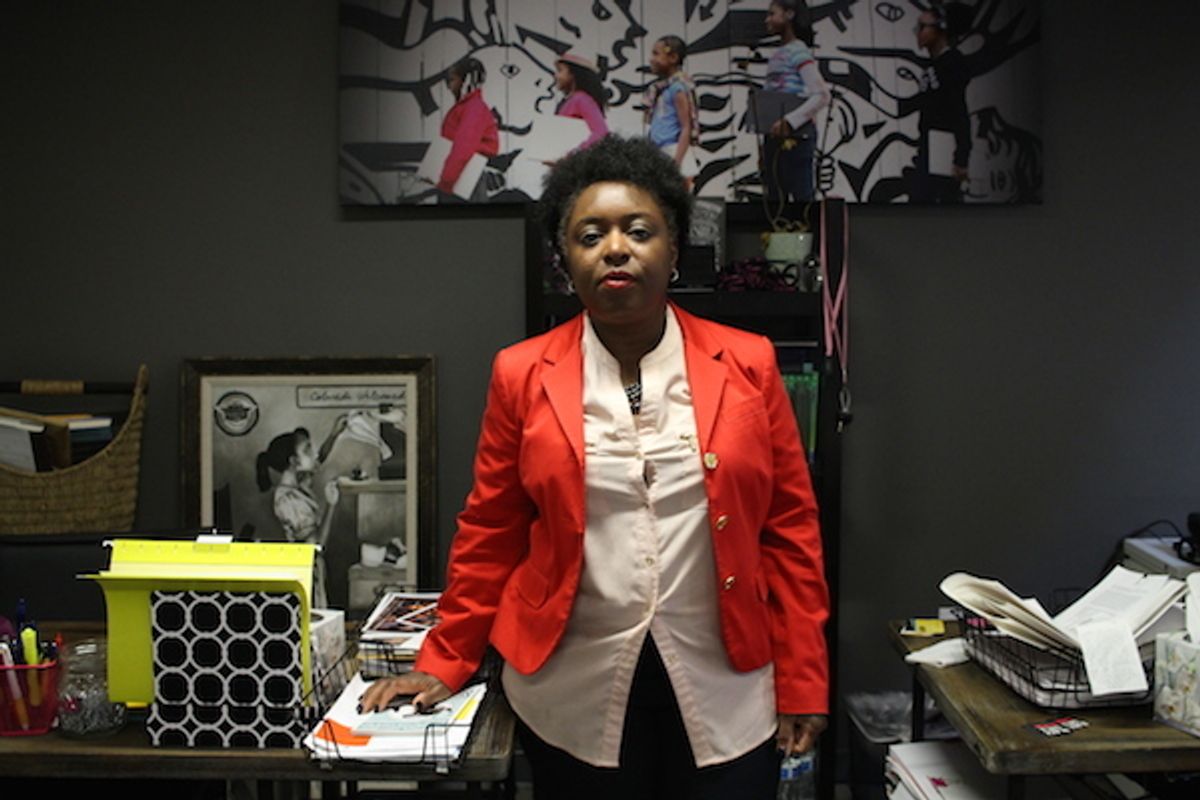Last year, Google took the first step in admitting to the world Silicon Valley's biggest problem: if you weren't a white guy, you didn't belong in tech. Though Google's lack of diversity wasn't a shock for anyone, it confirmed exactly what minority and women advocates have been arguing for years.
Many advocates note that, beginning around age 7, there is a severe disconnect between boys and girls' interest in tech—and interest slows more drastically among minority girls, especially those who go to underfunded schools.
Kimberly Bryant, 47, founder of the SF-based non-profit Black Girls Code (BGC), recognized the problem back in 2010, when her daughter showed interest in game design and was sent to a summer coding camp for kids.
“I went to pick her up and it was just a room full of boys and only a couple of girls," and all were white, Bryant says. “It sort of mimicked the situation I was seeing on the professional side. I would think it would be better for her and her generation, but that wasn't the case."
Less than a year later, in April 2011, Bryant started BGC in the hopes of getting minority schoolgirls aged 7 to 17 interested in science, technology, engineering and math (STEM) programs, and to recruit them into a workforce that is estimated to have more jobs than eligible employees by 2020.
TRYING TO MAKE CODING FUN
Although tech wasn't Bryant's passion growing up, she was nudged into the field by a guidance counselor during her freshman year.
“There was this huge push at the beginning to mid-'80s to get women and people of color in STEM fields, and a lot of focus from college recruiters and educators," Bryant recalls of her own experience during high school.
But the number of women interested in the field has been declining ever since. In 1984, 37 percent of women who graduated got a degree in STEM. Now, only 12 percent graduate with a related degree.
Bryant immediately noticed that her engineering classes were taught by all white men. Not a person of color or a woman in sight. A few decades later, when she moved out west to work at a bio-enginnering company, the situation was the same: Bryant was one of just a handful of women within her company, and the only black girl around.
“It was weird for me to see that," Bryant remembers. “Coming from such a diverse industry and diverse company, and this kept happening over and over."
But ensuring diversity in tech can be tough for hiring managers, and many companies are now taking steps to engage younger crowds in hopes of recruiting for jobs down the line.
The software company Thoughtworks, for example, partnered with BGC to generate interest in gaming software among girls, offering a one-day workshop teaching the creation of mini games. Electronic Arts, Inc. partnered with East Coast–based Girls Who Code to host a summer intensive, and Google has their own computer science summer institute for high school graduates.
TECH'S CULTURE PROBLEM
In 2013, the U.S. Census calculated more than 7.2 million STEM-related jobs, almost half of them computer-related. But the same survey showed that females filled only 26 percent of those jobs, and minorities held less than 10 percent.
And though the pervasive idea has been that women are completely absent from the tech workforce, there are women-centric roles, sometimes even dominating certain departments such as human resources and marketing. Apple, for example, released numbers that show women making up 20 percent of the tech-specific workforce, but with higher numbers in non-tech and leadership roles.
But peer into the offices of web designers and developers at tech companies, and you'll find only a smattering of women and people of color. Among tech companies that released their diversity numbers last year, only seven percent or fewer applicants were black or Hispanic. And, the National Science Foundation released a report last year showing black women accounted for less than 10 percent of all women hired in STEM fields.
“When these numbers started to hit, I saw a tremendous change and pivot in terms of not having to really struggle to show that the work we were doing was important," says Bryant.
GETTING KIDS BEHIND A COMPUTER
But with all the media hype and continued push for getting minorities and women into the tech workforce, BGC still has its struggles, including the challenge of bringing more STEM programs to poverty-stricken Bay Area schools. Without those, Bryant says, it's an uphill battle trying to get kids interested.
The National Women's Law Center and the National Association of the Advancement of Colored People's Legal Defense Fund released a report last year that found girls of color, compared to girls in general, were more likely to show an interest in science and math. But with lack of resources for education, interest dwindles. Bryant says the issue is critical: Girls come to her for a workshop where they can learn valuable technical skills, but then they have no way of continuing their development even if they want to.
“A lot of the students coming into the program do not have technology at home," she says. “They may have a phone. Maybe a [tablet], but that's a huge maybe. Most of the time, they don't have a computer."
But even without proper resources, there have been laudable successes that speak specifically to what minority women can bring to companies.
At one event, a group of girls created an app and wearable device to track missing women, a problem many of these girls have dealt with while living in tough neighborhoods.
“They're creatively looking at ways to solve problems that they see on a day to day basis," says Bryant. “It's really untapped genius that we're not addressing."





















